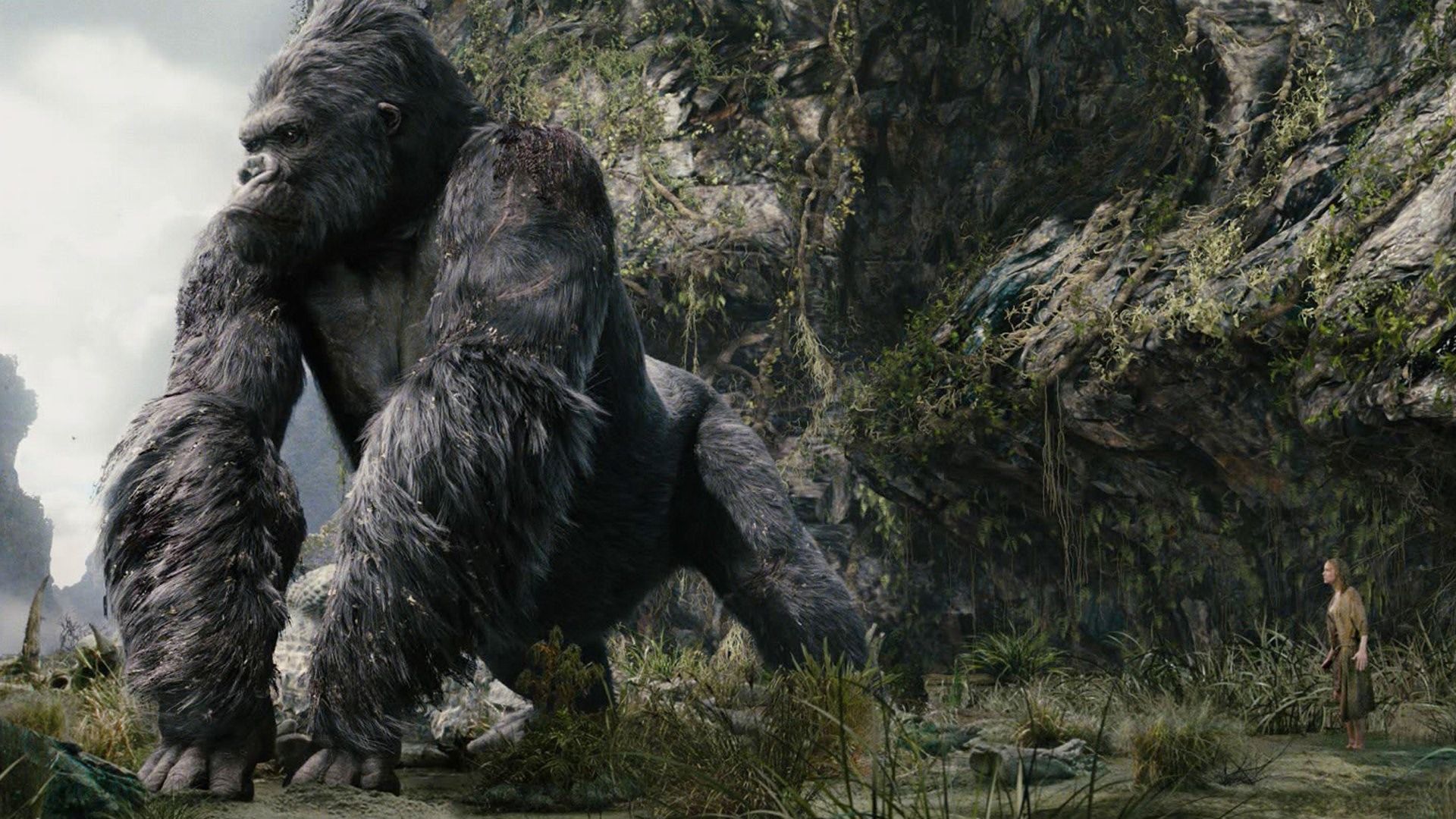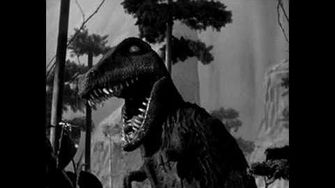2020. 1. 24. 01:27ㆍ카테고리 없음

On good days I consider ' the seminalfilm of the sound era, but on bad days it is 'King Kong.' That is notto say I dislike 'King Kong,' which, in this age of technicalperfection, uses its very naivete to generate a kind of creepy awe. It's simplyto observe that this low-rent monster movie, and not the psychological puzzleof 'Kane,' pointed the way toward the current era of special effects,science fiction, cataclysmic destruction, and nonstop shocks. 'KingKong' is the father of ',' the 'movies and countless other stories in which heroes are terrified by skillfulspecial effects.
A movie like 'Silence of the Lambs,' which finds itsevil in a man's personality, seems humanistic by contrast.Advertisement. I'veseen 'King Kong' (1933) many times, most memorably in its re-releasein the 1950s, when it did indeed scare me. In recent years I have focused onthe remarkable special effects, based by Willis O'Brien and others on his f/xwork in 'The Lost World' (1925) but achieving a sophistication andbeauty that eclipsed anything that went before.
The movie plunders every trickin the book to create its illusions, using live action, back projection,stop-motion animation, miniatures, models, matte paintings and sleight-of-hand.And it is not stingy with the effects; after a half-hour of lumbering dialogueand hammy acting, the movie introduces Kong and rarely cuts away from sequencesrequiring one kind of trickery or another.But'King Kong' is more than a technical achievement. It is also a curiouslytouching fable in which the beast is seen, not as a monster of destruction, butas a creature that in its own way wants to do the right thing. Unlike theextraterrestrial spiders in the 'Alien' pictures, which embodysingle-minded aggression, Kong cares for his captive human female, protectsher, attacks only when provoked, and would be perfectly happy to be left aloneon his Pacific Island. It is the greed of a Hollywood showman that unleashesKong's rage, and anyone who thinks to exhibit the beast on a New York stage infront of a live audience deserves what he gets-indeed, more than he gets.Themovie was directed by and Ernest Scheodsack, and produced bythem with the legendary, then head of RKO Radio Pictures.Selznick took little credit for the film, saying his key contribution was toput O'Brien's f/x techniques together with Cooper and Schoedsack's story ideas.Althoughit has the scope and feel of an expensive epic, 'Kong' had arelatively moderate budget of about $600,000. Sequences that would take weeksthese days-such as when Kong shakes a log to dislodge the men clinging toit-were done in two days, and the giant wall that separates the islandvillagers from the monster was a set originally built as the Temple ofJerusalem for Cecil B. DeMille's 'King of Kings' (1927).
NES - King Kong 2: Ikari no Megaton Punch (JPN) - Sound Effects - The #1 source for video game sounds on the internet!

Although FayWray had been in movies since 1923 and was a B-list star, her leading man, was appearing in his first picture after having been spotted byCooper as the doorman in a Hollywood club.Advertisement. Thestory is not sophisticated.
A movie director (Robert Armstrong) hires a ship,recruits his leading lady from off the streets of New York at the last moment,and sails for a mysterious Pacific island he heard about in Singapore. Theisland contains a legendary giant ape, which he hopes to use as the star of hismovie. Fay Wray plays Ann Darrow, Kong's co-star, and Cabot is the sailor whofalls in love with her and saves her from Kong.Modernviewers will shift uneasily in their seats during the stereotyping of theislanders in a scene where a bride is to be sacrificed to Kong (it is rare tosee a coconut brassiere in a non-comedy), but from the moment Kong appears onthe screen the movie essentially never stops for breath. In an astonishingoutpouring of creative energy, O'Brien and his collaborators (including RKO'slegendary visual effects artist Linwood Dunn and sound man Murray Spivack) showKong in battle with two dinosaurs, a giant snake, a flying reptile and aTyrannosaurus rex. Later, in New York, he will climb to the top of the EmpireState Building and bat down a biplane with his bare hand.Thevisual techniques are explained by film historian Ron Haver, whose commentarytrack on the 1985 Criterion laser disc was one of the first ever recorded. Heis amusing in describing how some live-action scenes were miniaturized to makethe Kong model look larger; searching for the right screen to project them on,the filmmakers hit on a screen made of condoms, to the consternation of anearby druggist who could not understand their orders for a gross at a time.Haver also observes how Kong's fur seems to crawl during several scenes; themodel was covered with rabbit fur, and the fingers of the stop-action animatorsdisturbed it between every stop-action shot. The effect, explained by thefilmmakers as 'muscles rippling,' is oddly effective.

(When a DVD of'King Kong' is finally issued, Turner Pictures would be wise to recyclethe Haver commentary.)Fromthe moment of its making, 'King Kong' fell under the censors'scissors. Cooper himself removed one notorious sequence after the worldpremiere: The men shaken from the log fell into a chasm where they weredevoured by giant spiders, but the effect “stopped the picture in its tracks,”people walked out, and Cooper cut it. Another scene was taken out after theMotion Picture Code came into being. It shows Kong curiously removing some ofWray's clothes, tickling her, and sniffing his fingers.
Closeups of humansbeing crunched between Kong's jaws were also cut for various versions, but nowthe movie is intact again-except for the spiders.Advertisement. Howterrifying was it, really? Variety's original 1933 review conceded that'after the audience becomes used to the machinelike movements and othermechanical flaws in the gigantic animals on view, and become accustomed to thephony atmosphere, they may commence to feel the power.' The showbiz BibleVariety complained, however, 'it's a film-long screaming session forWray, too much for any actress and any audience.' Yes, but nobody hasever forgotten that performance. (At a Hollywood party in 1972, I saw HughHefner introduced to Fay Wray.
'I loved your movie,' he told her.' She asked.)Varietythen and now was hard to impress, but my guess, based upon my first viewing asa teenager, is that audiences found it plenty scary. In modern times the moviehas aged, as critic James Berardinelli observes, and 'advances intechnology and acting have dated aspects of the production.' Yes, but inthe very artificiality of some of the special effects, there is a creepinessthat isn't there in today's slick, flawless, computer-aided images.In'Jurassic Park' you are looking, more or less, at a real dinosaur.
King Kong Game Sound Effects
In'King Kong,' you are looking at an ideaof a dinosaur, created by hand bytechnicians who are working with their imaginations. When Kong battles thelarge flesh-eating dinosaur in his first big battle scene, there is a momentwhen he forces its jaws apart, and the bones crack, and blood drips from thegaping throat, and something immediate happens that is hard to duplicate on anycomputer.Thereare of course questions we cannot help asking.
Donkey Kong Country Sound Effects
Haver asks one: Why did thenatives build a door in their wall, so that Kong could come through? Commonsense asks another: How tall is Kong, really? (The filmmakers take poeticlicense: He's 18 feet tall on the island, 24 feet on stage, 50 feet on theEmpire State Building.) Even allowing for its slow start, wooden acting andwall-to-wall screaming, there is something ageless and primeval about'King Kong' that still somehow works.
